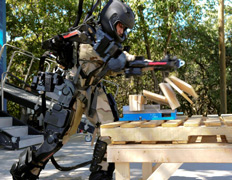
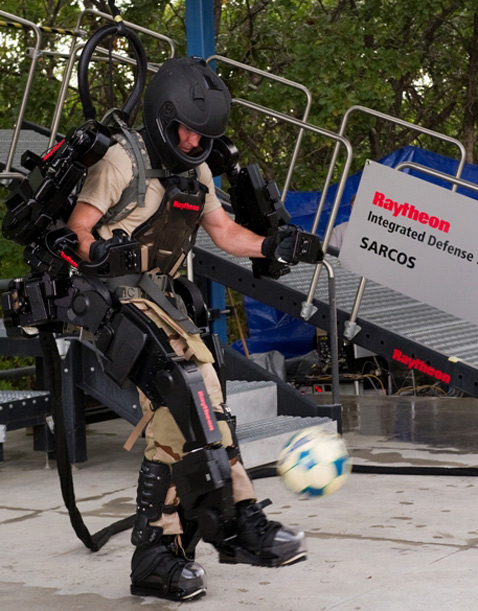
On the first exoskeleton built by Raytheon and absorbed her company Sarcos (start development), we described in detail. We recall only that the robot-suit the owner keeps track of the movement, strengthening them dozens of times. As reported today in the Raytheon press release, the second XOS stronger and faster than its predecessor, but uses 50% less energy and also more resistant to adverse environmental effects. And the new exoskeleton weighs 88.5 kilograms, is 10% less than the first model - tells Salt Lake City Tribune.
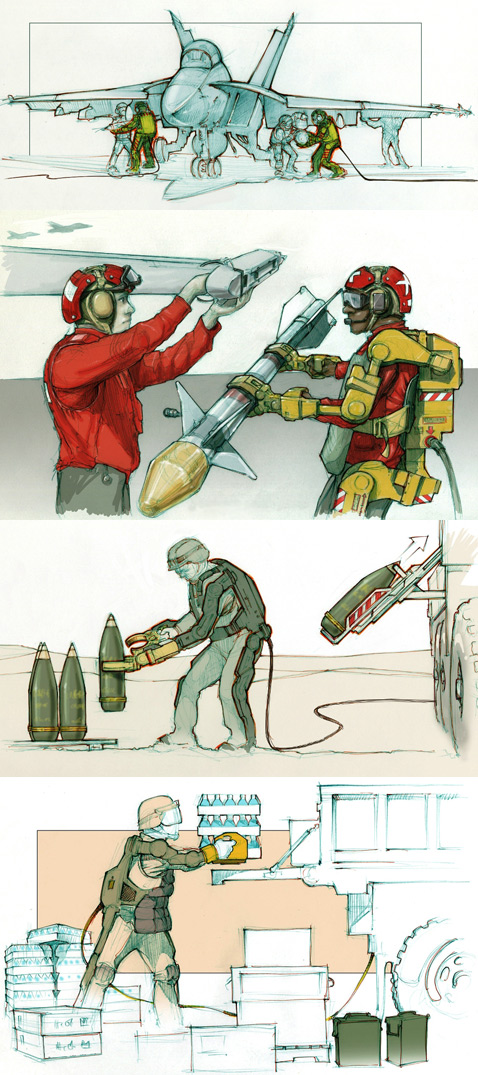
As conceived by Raytheon, the soldiers in the exoskeleton greatly accelerate and facilitate the loading and unloading of water, fuel and ammunition in the rear, and the theater of operations. Ability to single-handedly move the tank shell or air missiles means that more people can transfer to other tasks - says American innovators. At the presentation of XOS 2 in lab in Salt Lake City, Clark Gregg, who played in two parts of the movie "Iron Man" agent Phil Coulson, he tested the exoskeleton in action. "At the moment he most brings us to the suit Iron Man - shared his impressions of the actor. - He is fast becoming a reality, and it's wonderful. I look forward to the appearance of XOS 3. Interestingly, the public presentation of the first XOS in 2008, was clearly timed to coincide with the screens of the first "Iron Man", though officially this is not mentioned. Now, Raytheon, who invited Gregg, I do not hide suggest themselves associations. It is no coincidence the publication of the XOS 2 "successfully" coincided with the release of Iron Man 2 on DVD and Blu-Ray.
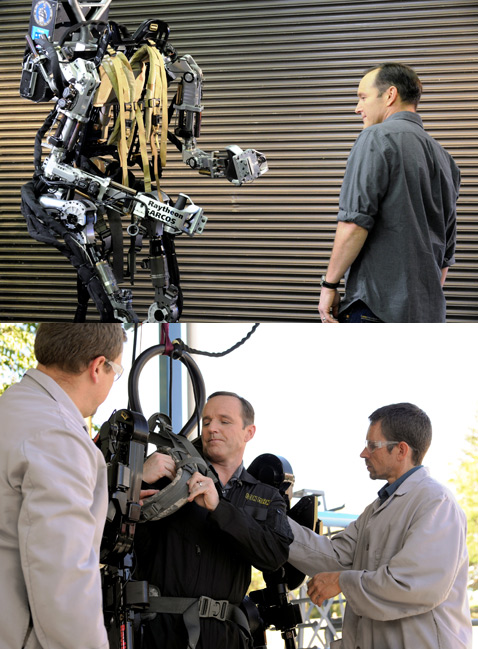
First XOS showed everyone, and especially by the authors of the system that it is efficient. Given the experience, Raytheon dropped force to optimize the design from a skeleton and ending with all the sensors and actuators. As a result, managed to increase the energy efficiency of the robot.
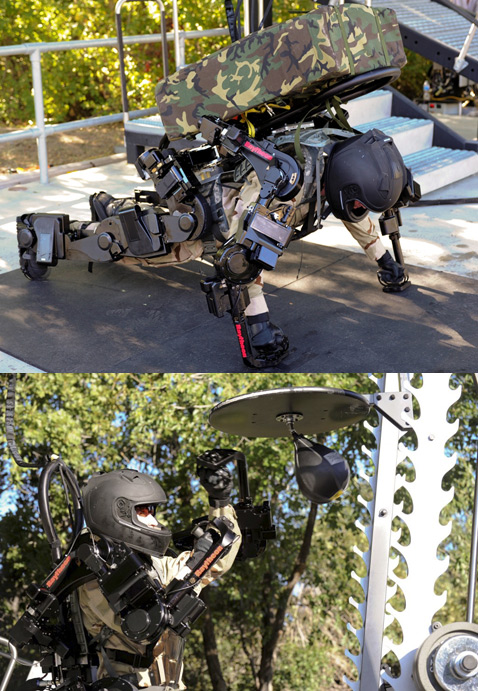
Limbs of this suit, by the way, drives a hydraulic pressure. But supply is still located outside the machine, so that the real Iron Man is bound to the stationary equipment with long cables and hoses. However, even in such a similar suit could benefit, and later the engineers are going to fully "decouple" the exoskeleton. In the next clip creators XOS 2 talk about him and the whole project in more detail.
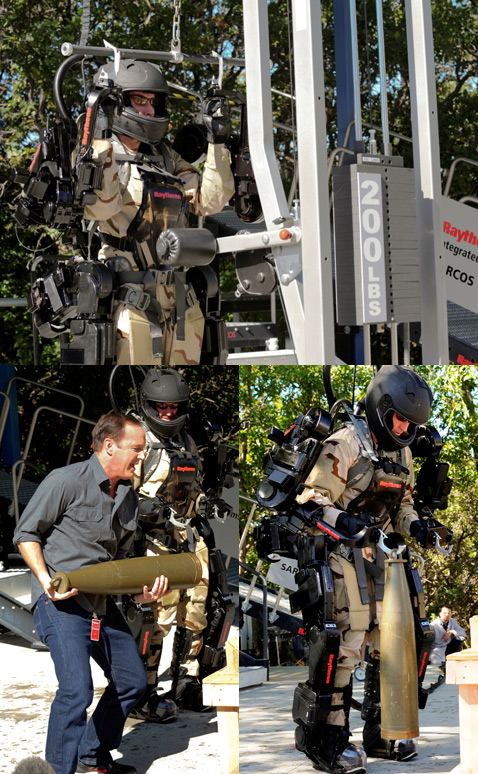
Vice-President of Raytheon Sarcos Fraser Smith (Fraser Smith) said: "The deployment of exoskeletons inevitable. They are urgently needed, and I believe the military look to them as a viable solution to several current issues." The authors explain the costume that much physical strain on soldiers in all kinds of transport and storage operations are not only negative point, reducing the rate of work, but also an extra risk factor, a potential source of injury. Power suit could alleviate these problems. In the future, Raytheon engineers do not exclude the hardened and armored versions, designed to break the walls and doors in operations to rescue hostages. This modification was on the drawing boards, but still focus on "commercial" ipostazi of the project - says Engadget.
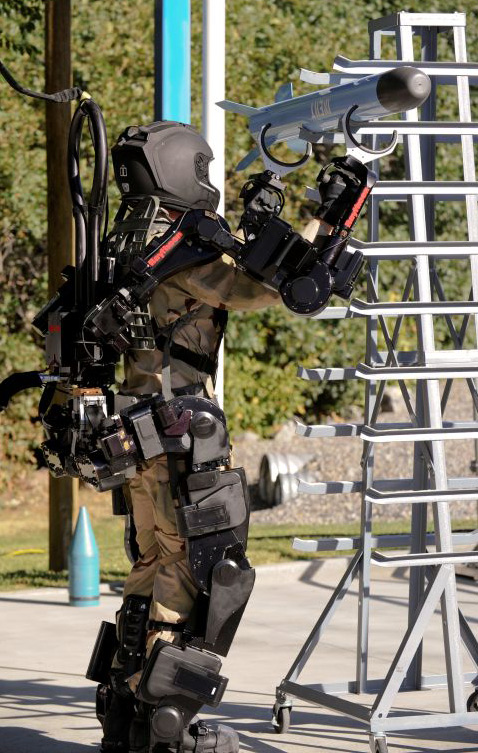
However, the audience was constantly the main question - "since when?" When people try on clothes iron men? Raytheon intends to bring his project to implementation. "We expect that exoskeletons will appear on the theater about five years tied version, and perhaps three to five years after that - even in stand-alone option," - says Smith. Given the still decent power consumption in such a suit, it remains to ask: does the company find a way to create palladium "arc reactor"?